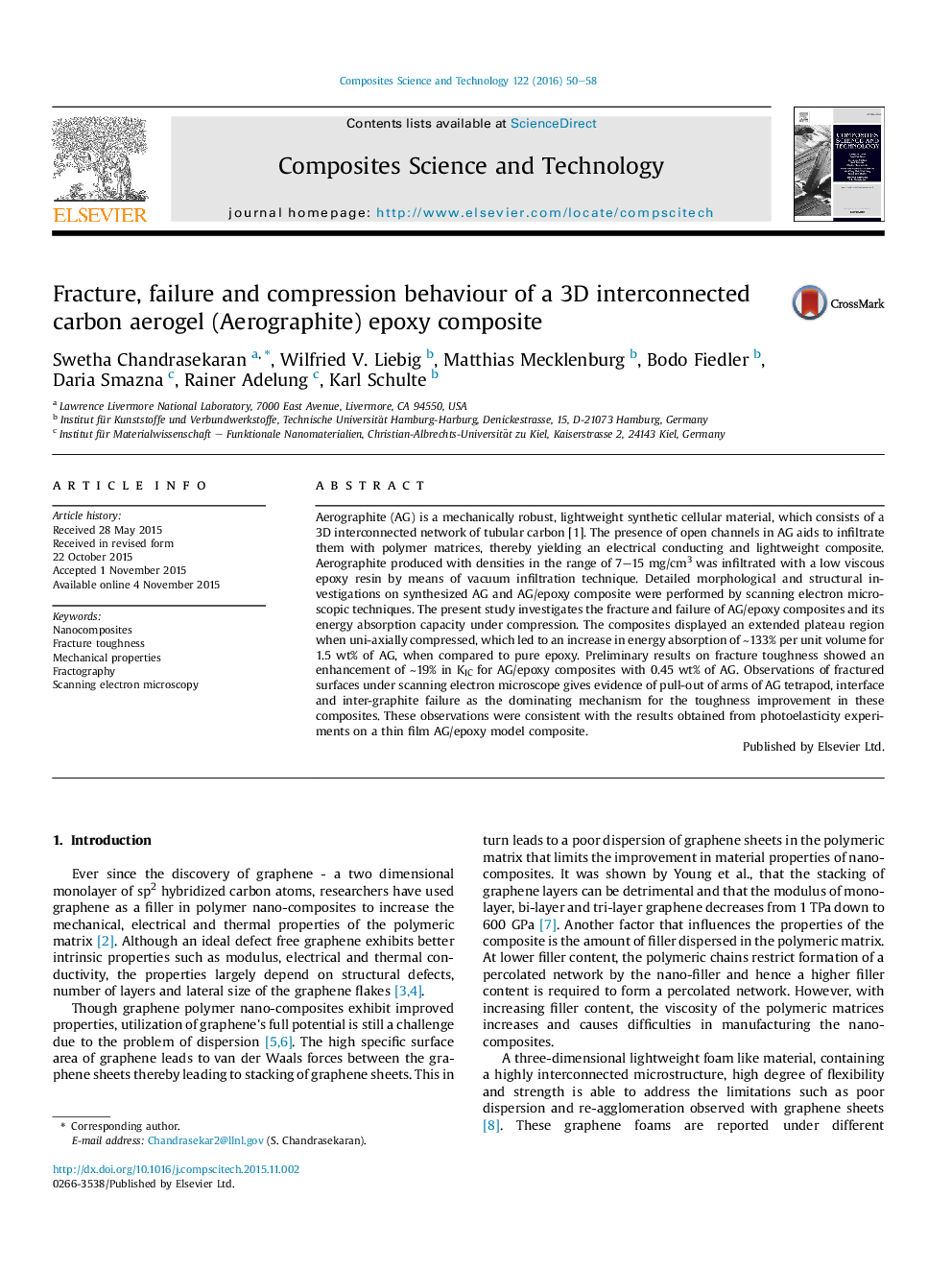| Article ID | Journal | Published Year | Pages | File Type |
|---|---|---|---|---|
| 820045 | Composites Science and Technology | 2016 | 9 Pages |
Aerographite (AG) is a mechanically robust, lightweight synthetic cellular material, which consists of a 3D interconnected network of tubular carbon [1]. The presence of open channels in AG aids to infiltrate them with polymer matrices, thereby yielding an electrical conducting and lightweight composite. Aerographite produced with densities in the range of 7–15 mg/cm3 was infiltrated with a low viscous epoxy resin by means of vacuum infiltration technique. Detailed morphological and structural investigations on synthesized AG and AG/epoxy composite were performed by scanning electron microscopic techniques. The present study investigates the fracture and failure of AG/epoxy composites and its energy absorption capacity under compression. The composites displayed an extended plateau region when uni-axially compressed, which led to an increase in energy absorption of ∼133% per unit volume for 1.5 wt% of AG, when compared to pure epoxy. Preliminary results on fracture toughness showed an enhancement of ∼19% in KIC for AG/epoxy composites with 0.45 wt% of AG. Observations of fractured surfaces under scanning electron microscope gives evidence of pull-out of arms of AG tetrapod, interface and inter-graphite failure as the dominating mechanism for the toughness improvement in these composites. These observations were consistent with the results obtained from photoelasticity experiments on a thin film AG/epoxy model composite.
